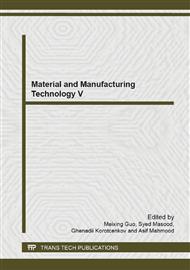p.33
p.38
p.43
p.50
p.55
p.60
p.66
p.71
p.76
Effect of Calcination Temperature on the Morphology of Carbon Nanosphere Synthesized from Polymethylmethacrylate
Abstract:
In this work, hollow carbon nanospheres (HCNs) were synthesized by carbonizing core/shell particles of polymethylmethacrylate (PMMA)/ resorcinol formaldehyde. The core/shell particles were prepared using emulsion polymerization; polymethylmethacrylate as a template and resorcinol-formaldehyde polymer as the carbon source. Spheres were first synthesized by batch mode polymerization and then the shell was polymerized on the surface of the spheres. The composite was stabilized, and then carbonized. The effect of calcination temperature was investigated in the range between 200-500 oC. Scanning electron microscopy (SEM), energy-dispersive X-ray spectrometer (EDX), Raman and Fourier transform infrared (FTIR) were used for characterization of the resulting carbon.
Info:
Periodical:
Pages:
55-59
Citation:
Online since:
June 2014
Authors:
Price:
Сopyright:
© 2014 Trans Tech Publications Ltd. All Rights Reserved
Share:
Citation:


